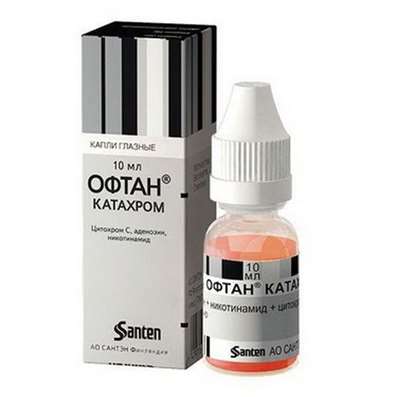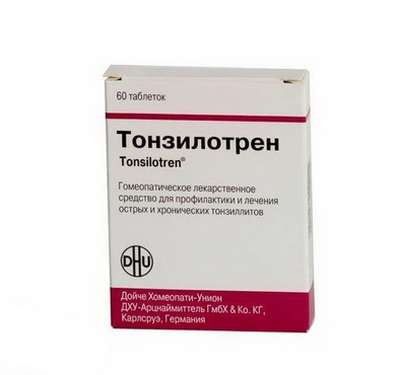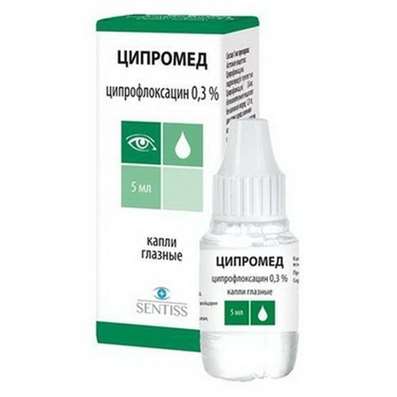Instruction for use: Ibufen
I want this, give me price
Active substance Ibuprofen
ATX code M01AE01 Ibuprofen
Pharmacological group
NSAIDs - Propionic acid derivatives
Nosological classification (ICD-10)
G43 Migraine
The pain of migraine, Migraine, hemiplegic migraine, Migraine headache, A migraine attack, Continuous headache, hemicranias
J02.9 Acute pharyngitis, unspecified
purulent pharyngitis, Acute nasopharyngitis,Limfonodulyarny pharyngitis
J06 Acute upper respiratory infections of multiple and unspecified
Frequent colds viral diseases, Infections of the upper respiratory tract, Acute respiratory disease influenza character, for colds Pain, Acute colds,Cold, respiratory infection,Seasonal colds, Pain in infectious and inflammatory diseases of the upper respiratory tract, Bacterial infections of the upper respiratory tract, Bacterial respiratory infections, Viral disease of the respiratory tract, Viral respiratory tract infections, Inflammatory disease of the upper respiratory tract, Inflammation of the upper respiratory tract disease, Inflammation of the upper respiratory tract illness with difficult sputum, Inflammatory airway disease, Secondary infections with colds, Shortness of sputum in acute and chronic respiratory diseases, Upper respiratory tract infection, Infections of the upper respiratory tract, Respiratory Tract Infections, Infections of the respiratory tract and lungs, Infectious-inflammatory diseases of the upper respiratory tract, Infectious-inflammatory diseases of the upper respiratory tract and ENT-organs, Infectious-inflammatory diseases of the upper respiratory tract in children and adults, Infectious-inflammatory diseases of the upper respiratory tract, Infectious inflammation of the airways,respiratory infection, Qatar upper respiratory tract, Catarrh of the upper respiratory tract, Catarrhal disease of the upper respiratory tract, Catarrhal symptoms of the upper respiratory tract, Coughing with a cold, SARS, ARI, ARI with rhinitis phenomena, Acute respiratory infection, Acute infectious and inflammatory disease of the upper respiratory tract, Acute respiratory disease, Sore throat or nose, Respiratory viral infections, Respiratory diseases, Respiratory infections, Recurrent respiratory infections, Secondary infection with influenza, cold in the chest, Feverish condition with flu usitis, acute sinusitis, genyantritis, purulent sinusitis
J11 Influenza, virus not identified
Flu, Influenza in the early stages of the disease, Flu in children, cold in the chest, Begins flu-like condition, Acute disease parainfluenza, parainfluenza, parainfluenza state, influenza epidemics, The pains of the flu, Influenza
K00.7 Teething syndrome
Pain syndrome with teething, Painful teething, Painful growth of teeth
K08.8.0 * Painful toothache
Dentinal pain, Dentinal pains, Pain pulpitis, Anesthesia in dentistry, Pain syndromes in dental practice, Pain after removal of tartar, Pain when extracting a tooth, Toothache, Pain after dental interventions
M25.5 Pain in the joint
Arthralgia, Pain syndrome in musculo-articular diseases, Pain syndrome in osteoarthritis, Pain syndrome in osteoarthritis, Pain syndrome in acute inflammatory diseases of the musculoskeletal system, Pain syndrome in chronic inflammatory diseases of the musculoskeletal system, Pain in the joints, Soreness of the joints, Soreness of joints in severe physical exertion, Painful inflammatory joint damage, Painful conditions of the musculoskeletal system, Painful joint conditions, Painful traumatic affection of joints, Pain in the musculoskeletal system, Pain in Shoulder Joints, Pain in the joints, Joint pain, Joint pain with injuries, Musculoskeletal pain, Pain with osteoarthritis, Pain in the pathology of the joints, Pain in rheumatoid arthritis, Pain in chronic degenerative bone diseases, Pain in chronic degenerative joint diseases, Bone-joint pain, Joint pain, Arthritic pain of rheumatic origin, Articular pain syndrome, Joint pain, Rheumatic pain, Rheumatic pains
M79.1 Myalgia
Myofascial pain syndromes ,Pain syndrome in musculo-articular diseases, Pain syndrome in chronic inflammatory diseases of the musculoskeletal system, Pain in the muscles, Tenderness of muscles, Muscular soreness in severe physical exertion, Painful conditions of the musculoskeletal system, Pain in the musculoskeletal system, Pain in the muscles, Pain at rest, Muscle aches, Muscle pain, Musculoskeletal pain, Myalgia, Muscle pain, Muscle pain at rest, Muscle pain, Muscular pain of non-rheumatic origin, Muscle pain of rheumatic origin, Acute muscle pain, Rheumatic pain, Rheumatic pains, Myofascial syndrome, Fibromyalgia
M79.2 Neurology and neuritis, unspecified
Pain syndrome with neuralgia, Brachialgia, Occipital and intercostal neuralgia, Neuralgia, Neuralgic pain, Neuralgia, Neuralgia of intercostal nerves,Neuralgia of the posterior tibial nerve, Neuritis, Neuritis traumatic, Neuritis, Neurological Pain Syndromes, Neurological contractures with spasms, Acute neuritis, Peripheral neuritis,Post-traumatic neuralgia,Severe pain of a neurogenic nature, Chronic neuritis, Essential neuralgia
R50 Fever of unknown origin
Malignant hyperthermia, Hyperthermia malignant
R51 Headache
Pain in the head, Cephalgia, Pain with sinusitis, Pain in the back of the head, Painful headache, Headache of vasomotor genesis, Headache of vasomotor origin, Headache with vasomotor disorders, Headache, Neurological headache, Serial headache
T14.3 Dislocation, sprain and damage to the capsular-ligamentous apparatus of the joint of the unspecified area of the body
Painful stretching of muscles, Pain and inflammation in tension, Dislocation of dislocation, Degenerative changes in the ligamentous apparatus, Edema due to sprains and bruises, Edema after interventions for sprains, Damage and rupture of ligaments, The musculoskeletal system is damaged, Damage to ligaments, Damage to the joints, Ligament ruptures, Tendon tendons,Ruptures of the tendons of muscles,Stretching, Crick, Stretching of the muscle, Sprain, Tension of the tendons, Extensions,Stretch muscles, Sprains, Tension of the tendons, Injury of the musculoskeletal system, Injuries to the joints, Injuries of capsule-articular tissues, Injuries of the osteoarticular system, Injuries to ligamentsInjuries to the joints, Joint wounds, Stretching of the ligamentous apparatus, Habitual stretching and tearing
T14.9 Injury unspecified
Pain syndrome after trauma, Pain syndrome with injuries, Pain syndrome with trauma and after surgery, Pain in case of injury, Pain of a traumatic nature, Joint pain with injuries, Postoperative and post-traumatic pain, Pain in case of injury, Pain of a traumatic origin, Severe pain syndrome of traumatic origin, Deep tissue damage, Deep scratches on the trunk, Closed injury, Minor Household Injuries, Minor skin damage, Violations of the integrity of soft tissues, Uncomplicated trauma, Extensive traumatic injury, Acute pain syndrome of traumatic origin, Edema with trauma, Postponed sports injuries, Post-traumatic pain, Soft tissue injuries, Joint wounds, Sports injuries, Injury, Traumatic pain, Traumatic pains, Traumatic infiltrate,Injuries to sports
T88.1 Other complications associated with immunization, not elsewhere classified
Composition and form of release
Suspension for oral administration 5 ml
ibuprofen 100 mg
in bottles of orange glass to 100 g; in the box 1 bottle (the package is accompanied by a measurement with a scale).
Description of dosage form
Suspension orange with orange smell and sweet taste, with an easily perceptible burning taste. There may be a separation into a liquid layer and a precipitate, which, after mixing, form a homogeneous suspension.
pharmachologic effect
Antipyretic, analgesic, anti-inflammatory. It blocks cyclooxygenase of arachidonic acid, and reduces synthesis of PG. Antipyretic effect due to a decrease in the concentration of PG in the cerebrospinal fluid, a decrease in the excitation of the center of thermoregulation, resulting in the normalization of body temperature. The analgesic effect is associated with a decrease in the production of EH classes E, F, I, biogenic amines, changes in the sensitivity of nociceptors and prevention of hyperalgesia. The analgesic effect is most pronounced for inflammatory pains. The anti-inflammatory effect is due to a decrease in the secretion of inflammatory mediators and a decrease in the activity of the exudative and proliferative phase of the inflammatory process. Antipyretic and analgesic effect manifests itself earlier and at lower doses than the anti-inflammatory effect that occurs on the 5th-7th day of treatment.
Pharmacokinetics
After oral administration, more than 80% is absorbed from the digestive tract. Cmax in blood plasma is achieved with fasting - after 45 minutes, after eating after 1.5-2.5 hours. Binding to proteins is 90%. Slowly penetrates into the joint cavity, but in the synovial fluid it creates larger concentrations (in Cmax in the synovial fluid is achieved in 2-3 hours). Metabolized mainly in the liver. It is subjected to pre- and post-systemic metabolism. After absorption, about 60% of the pharmacologically inactive R-form is slowly transformed into an active S-form. It is excreted by the kidneys (60-90% in the form of metabolites and products of their compounds with glucuronic acid, to a lesser extent - with bile, in unchanged form - not more than 1%). It has a two-phase kinetics of elimination from T1 / 2 2-2.5 hours, after administration in a single dose is completely eliminated within 24 hours. The antipyretic effect of Ibufen develops in 30 minutes and lasts for 6-8 hours.
Indications
As an antipyretic agent: for colds, acute respiratory viral infections, flu, angina (pharyngitis), childhood infections accompanied by fever, postvaccinal reactions.
As an analgesic: with toothache, painful teething, headache, migraine, neuralgia, pain in the muscles, joints, with injuries and burns.
Contraindications
Hypersensitivity (including to acetylsalicylic acid or other NSAIDs), peptic ulcer of the stomach and duodenum, severe liver, kidney, cardiovascular, arterial hypertension, hemophilia, hypocoagulation, hemorrhagic diathesis, deficiency of glucose-6-phosphate dehydrogenase , bronospastic reactions after the use of acetylsalicylic acid or other NSAIDs ("aspirin asthma"), Quincke's edema, polyps of the nose, hearing loss, infantile age (up to 6 months, with body weight - below 7 kg).
Side effects
From the side of the central nervous system: headache, dizziness, sleep disturbance, anxiety, drowsiness, depression, agitation, visual impairment (reversible toxic amblyopia, blurred vision or double vision).
On the part of the organs of hematopoiesis: heart failure, tachycardia, increased blood pressure; anemia, thrombocytopenia, agranulocytosis, leukopenia.
On the part of the intestine: nausea, vomiting, decreased appetite, heartburn, abdominal pain, diarrhea, constipation, flatulence, liver dysfunction, peptic ulcers, gastric bleeding.
From the urinary system: acute renal failure, allergic nephritis, nephrotic syndrome (edema), polyuria, cystitis.
Allergic reactions: itching, rash, bronchospastic syndrome, allergic rhinitis, Quincke's edema, Stephen-Johnson syndrome, Lyell's syndrome.
Interaction
Do not combine with other NSAIDs (acetylsalicylic acid reduces anti-inflammatory effects and increases side effects). With simultaneous admission with diuretics, the diuretic effect decreases and the risk of developing kidney failure increases. Weakens the effect of antihypertensive drugs, including ACE inhibitors (simultaneously reduces their release by the kidneys), beta-adrenergic agents, thiazides. Strengthens the effect of oral hypoglycemic agents (especially sulfonylurea derivatives) and insulin, indirect anticoagulants, antiaggregants, fibrinolytics (increases the risk of hemorrhagic complications), toxic effects of methotrexate and lithium preparations, increases the concentration in the blood of digoxin.
Inducers of microsomal oxidation (phenytoin, ethanol, barbiturates, zixorin, rifampicin, phenylbutazone, tricyclic antidepressants) increase the risk of severe hepatotoxic complications (increase the production of hydroxylated active metabolites), inhibitors of microsomal oxidation - reduce. Caffeine enhances the analgesic effect.
Dosing and Administration
Inside, after eating. The average single dose is 5-10 mg / kg of body weight 3-4 times a day. Children aged 6 months - 1 year (7-9 kg) - 2.5 ml (50 mg) 3 times a day, the maximum daily dose - 7.5 ml (150 mg). 1-3 years (10-15 kg) - 2.5 ml (50 mg) 3-4 times a day, the maximum daily dose - 7.5-10 ml (150-200 mg). 3-6 years (16-20 kg) - 5 ml (100 mg) 3 times a day, the maximum daily dose - 15 ml (300 mg). 6-9 years (21-30 kg) - 5 ml (100 mg) 4 times a day, the maximum daily dose - 20 ml (400 mg). 9-12 years (31-41 kg) - 10 ml (200 mg) 3 times a day, the maximum daily dose - 30 ml (600 mg). Older than 12 years (more than 41 kg) - 10 ml (200 mg) 4 times a day, the maximum daily dose of 40 ml (800 mg). The dose can be repeated every 6-8 hours. Do not exceed the maximum daily dose. For children from 6 months to 1 year, the drug is prescribed on the recommendation of a doctor.
Overdose
Symptoms: abdominal pain, nausea, vomiting, retardation, headache, tinnitus, depression, drowsiness, metabolic acidosis, hemorrhagic diathesis, decreased blood pressure, acute renal failure, impaired liver function, tachycardia, bradycardia, atrial fibrillation; convulsions, apnea and coma (especially typical for children under 5 years old).
Treatment: gastric lavage, the appointment of activated charcoal, alkaline drink, symptomatic therapy (correction of KHS, AD).
Precautionary measures
Caution should be taken with cirrhosis of the liver with portal hypertension, hepatic and / or renal insufficiency, heart failure, nephrotic syndrome, hyperbilirubinemia, stomach and duodenal ulcer (in history), gastritis, enteritis, colitis, blood diseases (leukopenia, anemia) , pregnancy (II-III trimesters), during lactation. In patients with bronchial asthma or other diseases that occur with bronchospasm, an increased risk of developing bronchospasm may occur.
During long-term treatment, control of the peripheral blood picture and the functional state of the liver and kidneys is necessary. When symptoms of gastropathy appear, careful monitoring (esophagogastroduodenoscopy, a blood test with determination of hemoglobin, hematocrit, analysis of feces for latent blood) is shown.
If there is no antipyretic effect within 2 days and an analgesic effect within 3 days, you should consult a doctor. If side effects occur, stop taking the medication and consult a doctor.
special instructions
Before use, the vial should be shaken until a uniform suspension is obtained. With prolonged use of NSAIDs may cause damage to the gastric mucosa, peptic ulcers, gastrointestinal bleeding.
Patients with diabetes should be taken with caution - they contain sugar.
If side effects occur, stop taking the medication and consult a doctor.
storage Conditions
In dry, the dark place at a temperature of 15-25 ° C.
Keep out of the reach of children.
Shelf life
3 years.
Do not use after the expiry date printed on the package.

 Cart
Cart





